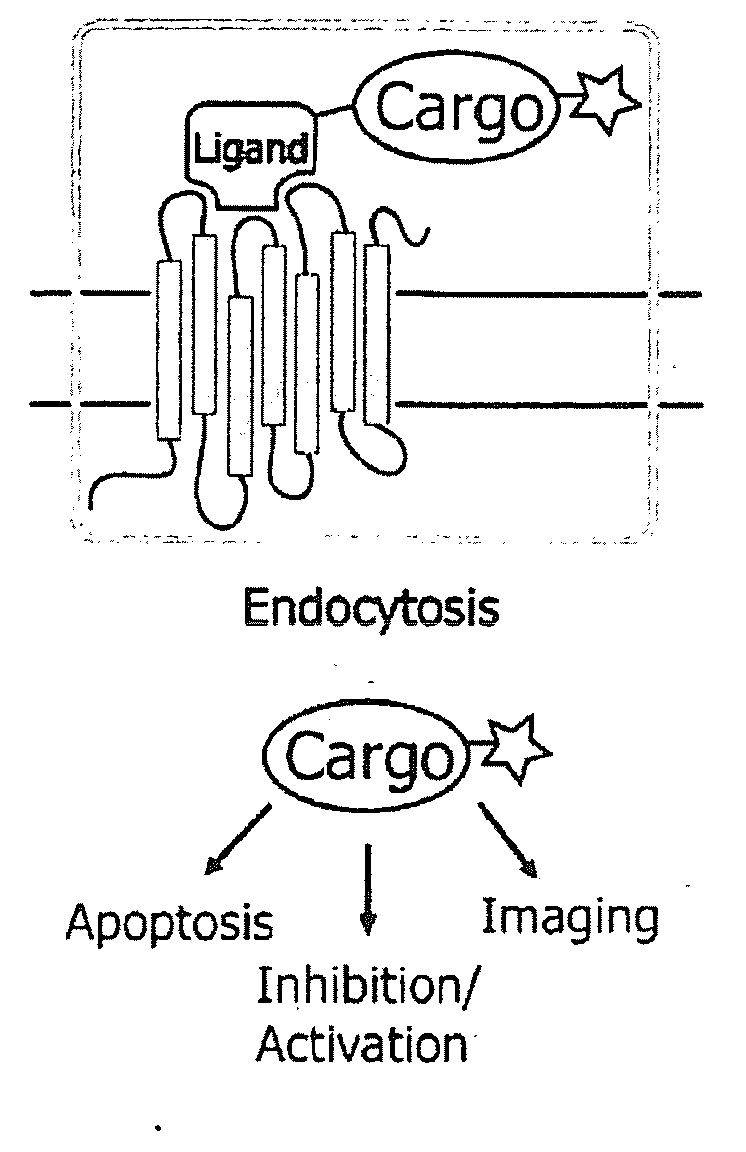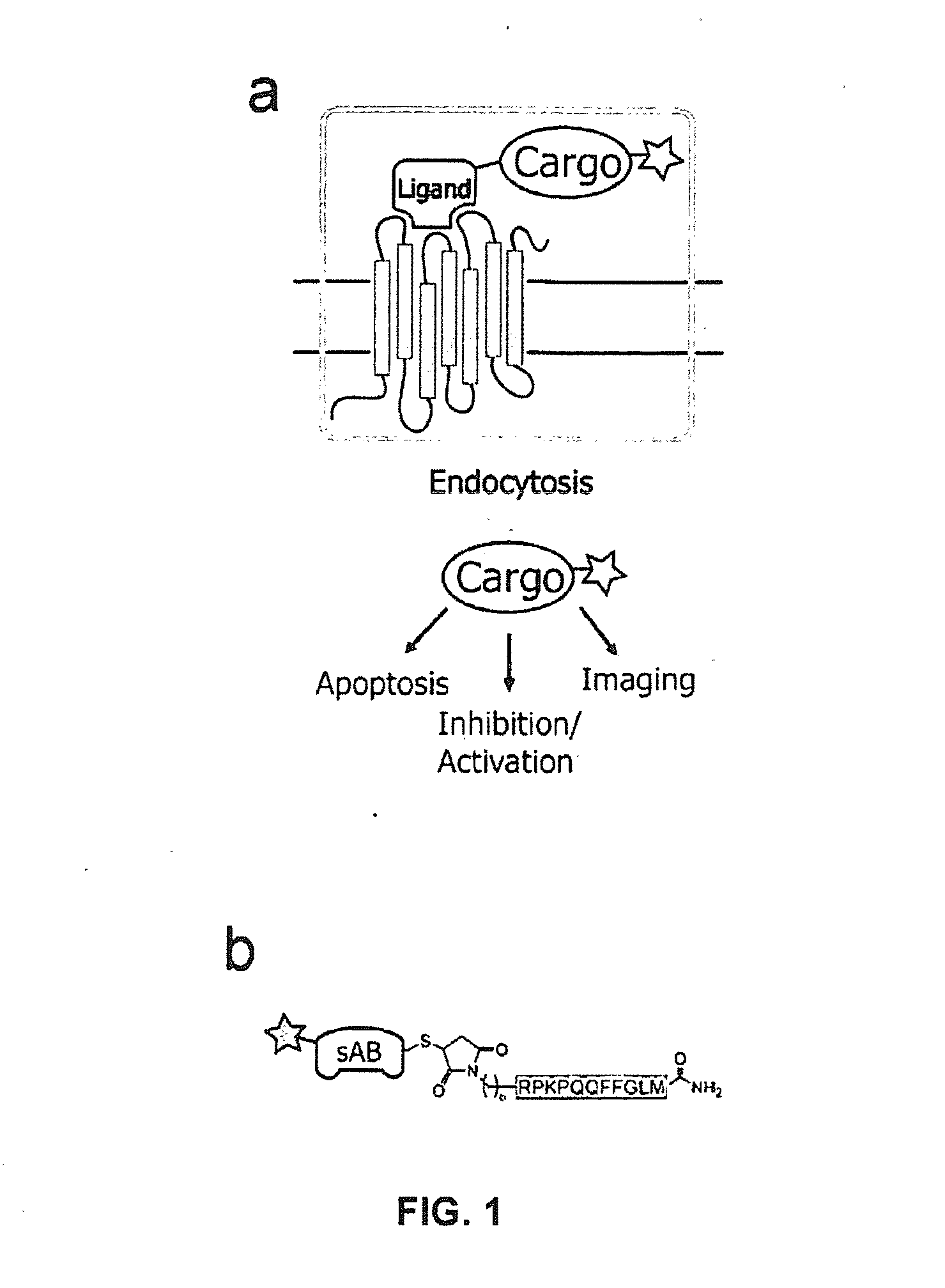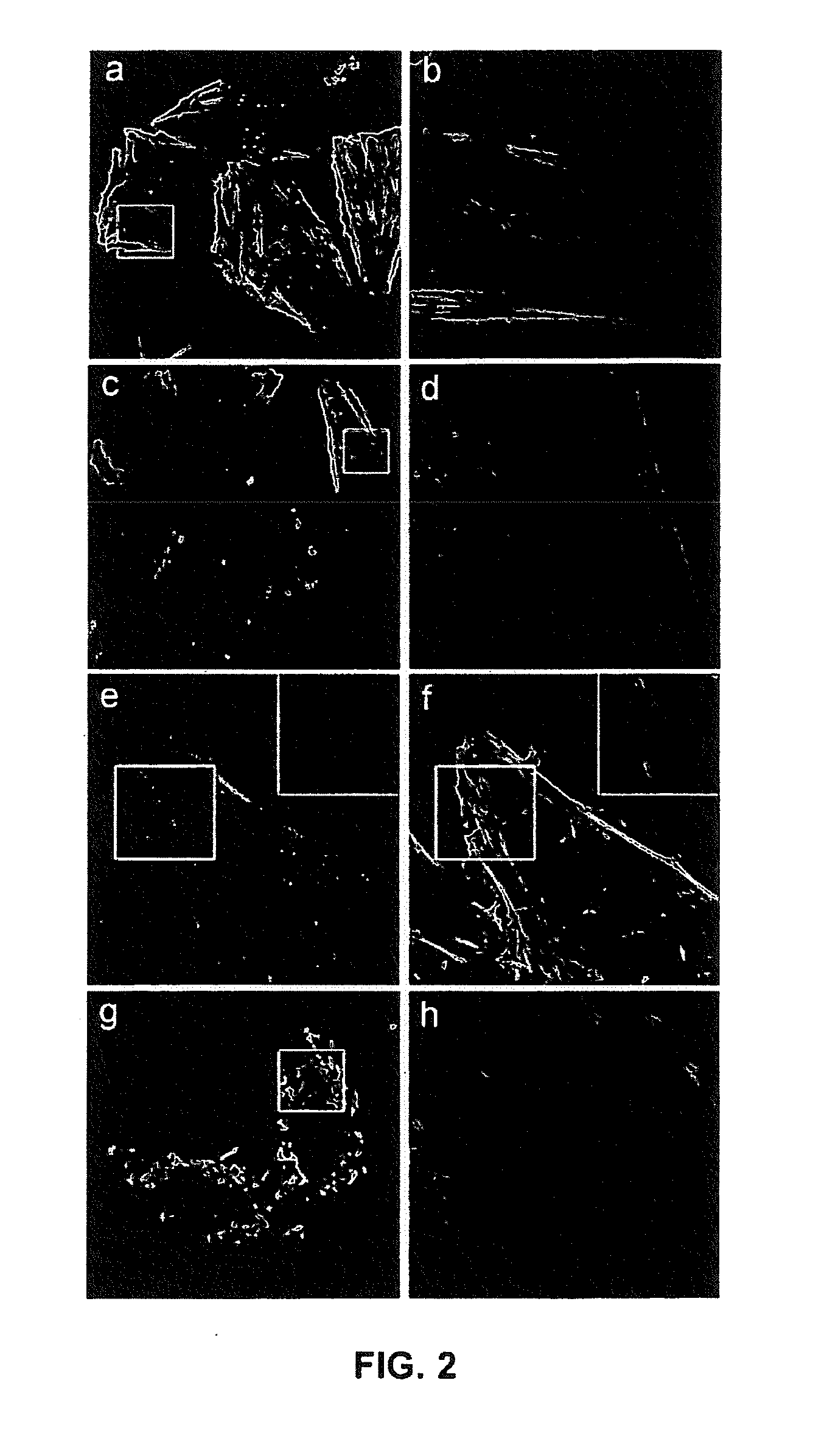NK-1 Receptor Mediated Delivery of Agents to Cells
a technology of nk1 receptor and nk1 receptor, which is applied in the direction of tumor/cancer cells, peptides, peptides/protein ingredients, etc., can solve the problems of inability to introduce active proteins into cells, inability to effectively treat cancer, and inability to achieve cellular integrity
- Summary
- Abstract
- Description
- Claims
- Application Information
AI Technical Summary
Problems solved by technology
Method used
Image
Examples
example 1
Materials and Methods
[0042]Peptide synthesis of SP variants: All protected amino acids and resin for peptide synthesis were purchased from Peptides International, solvents from Fisher Scientific, salts and buffers from Sigma Aldrich. Substance P-maleimide synthesis was carried out manually by t-Boc methods using p-Methyl-Benzhydrylamine resin to produce a C-terminal amide after HF cleavage. 6-maleimidohexanoic acid (Sigma) was used to introduce an N-terminal maleimide with a 6-carbon linker. Additionally, a variant of SP was synthesized with a cysteine mutation at position 3 for attachment of thiol-reactive fluorophores and was used as positive control for NK-1 receptor-mediated internalization. The peptides were cleaved from the resin using HF and extracted in 50% acetonitrile, 0.1% trifluoroacetic acid aqueous solution for lyophilization. The purity of the crude peptides was determined using an analytical C-18 reversed-phase column on a Shimatzu 10A-vp and their masses were confir...
example 2
Engineering a Delivery Vehicle Based on SP
[0051]An important feature of SP and variants thereof is that the seven amino acids at the C-terminus are sufficient for binding to the tachykinin receptor and subsequent internalization. This allows the incorporation of modifications for agent attachment at the N-terminus without loss of function. We synthesized a variant of SP that contains a C-terminal amide, in addition to an N-terminal thiol-reactive maleimide with a 6-carbon linker (FIG. 1b) using t-Boc chemistry. The maleimide moiety reacts with cysteine residues under physiologic conditions to form a stable thioether bond.
example 3
Construction of sAB Conjugates
[0052]To demonstrate the ability of engineered SP to delivery protein agents, we isolated three sABs (sAB-4, sAB-17 and sAB-27) from a restricted amino acid phage display library that had been engineered to bind to the pointed end of actin. Characterization of the actin-binding properties of the sABs indicated that each exhibits a unique binding mode to the actin filaments. sAB-4 causes rapid depolymerization of actin filaments, sAB-17 is a side-binder that has no apparent effect on the actin filament structure, and sAB-27 affects the overall structure of actin by inducing a twist in the filament. Prior to conjugation of the sABs to SP, each sAB was fluorescently labeled via surface lysines using an amine reactive fluorophore to facilitate visualization by confocal microscopy. As a consequence of the restricted amino acid library used for the sAB selection process, lysine residues are rarely incorporated in the antigen binding site. We found that target...
PUM
| Property | Measurement | Unit |
|---|---|---|
| Cell death | aaaaa | aaaaa |
| Structure | aaaaa | aaaaa |
| Cell proliferation rate | aaaaa | aaaaa |
Abstract
Description
Claims
Application Information
 Login to View More
Login to View More - R&D
- Intellectual Property
- Life Sciences
- Materials
- Tech Scout
- Unparalleled Data Quality
- Higher Quality Content
- 60% Fewer Hallucinations
Browse by: Latest US Patents, China's latest patents, Technical Efficacy Thesaurus, Application Domain, Technology Topic, Popular Technical Reports.
© 2025 PatSnap. All rights reserved.Legal|Privacy policy|Modern Slavery Act Transparency Statement|Sitemap|About US| Contact US: help@patsnap.com



